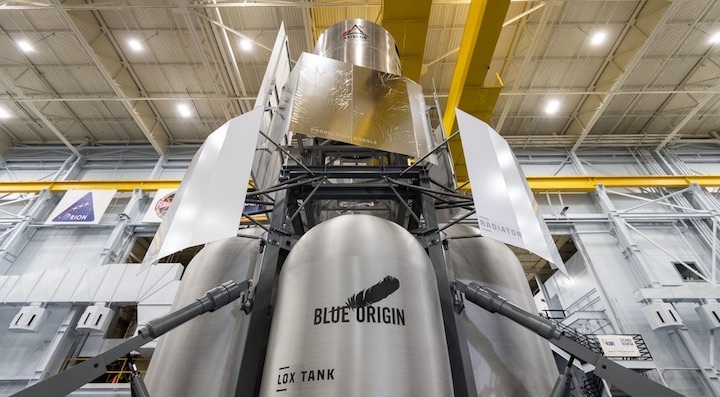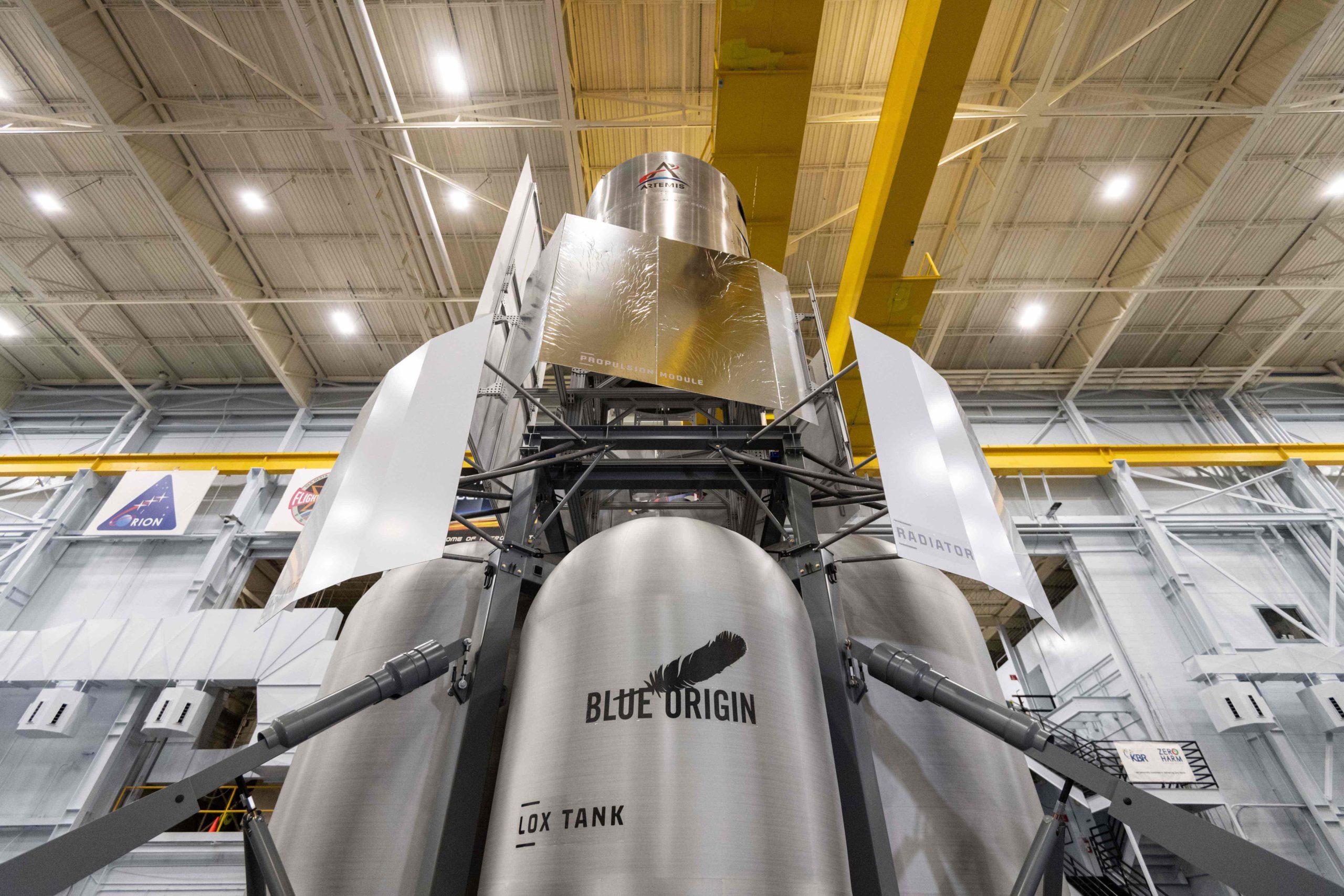
Less than four months since NASA selected three industrial teams to design and develop Human Landing System (HLS) concepts for the Artemis Program to return astronauts to the surface of the Moon by 2024, one of them—the Blue Origin National Team—has delivered a full-scale engineering mockup to the Johnson Space Center (JSC) in Houston, Texas. Standing more than 40 feet (12 meters) tall, its ascent and descent elements were craned into position on Thursday, 20 August, in the Space Vehicle Mockup Facility (SVMF) in JSC’s hallowed Building Nine. It will be put through an extensive and punishing regime of tests by engineers and astronauts through early next spring, as part of an initial ten-month study contract awarded through Appendix H of the public-private Next Space Technologies for Exploration Partnerships (NextSTEP)-2.
Backdropped in the SVMF by mockups of the Space Shuttle, various pressurized components of the International Space Station (ISS) and other crewed space vehicles, the mockup is an impressive agglomeration of tanks, pressurized components, engines and angular struts and landing legs.
“The mockup is a full-scale replica of the system that we’re going to be sending to the lunar surface in 2024,” said Ascent Element Program Manager Paul Anderson of Lockheed Martin. “This is humanity’s ultimate challenge. In order to pull this off, it takes a team.”

Led by Blue Origin, the National Team announced last October also includes Lockheed Martin, Northrop Grumman Corp. and Draper Laboratory. Its concept calls for a three-stage Integrated Lander Vehicle (ILV)—comprising Lockheed Martin’s reusable Ascent Element, Northrop Grumman’s Transfer Element and Blue Origin’s Descent Element, with the critical Guidance, Navigation and Control (GNC), avionics and software provided by Draper—and the overall design draws heavily upon both mature and novel technologies.
“We believe the National Team combines the best-of-breed from all of the talent in the U.S.,” said Transfer Element Program Manager Sally Richardson of Northrop Grumman.
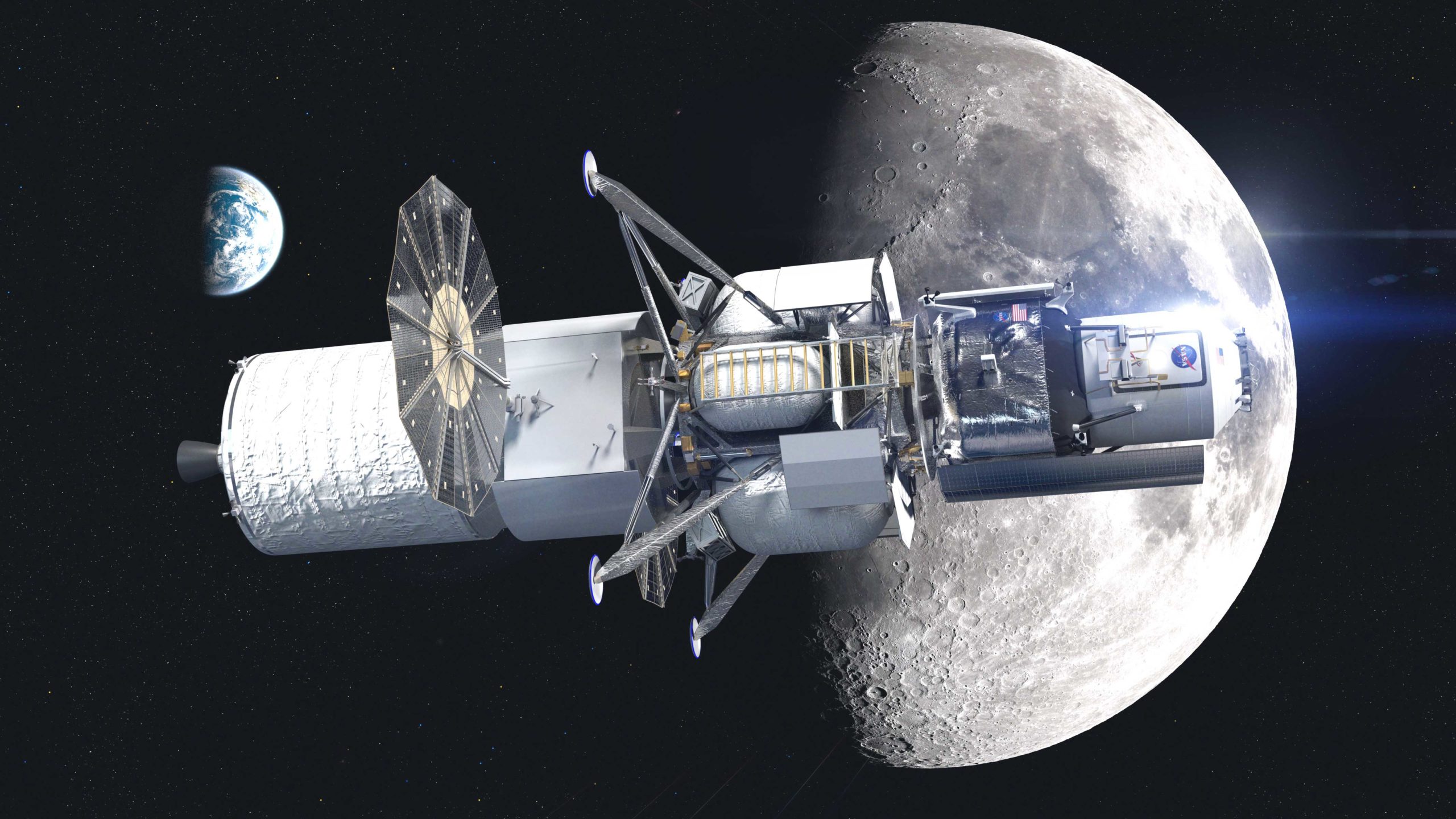
Lockheed Martin’s reusable Ascent Element provides a pressurized volume for the astronauts and incorporates similar avionics, software, life-support hardware, crew interfaces and mission operations as will be seen on the Orion spacecraft during its early Artemis voyages to the Moon.
Meanwhile, Northrop Grumman has tapped into the heritage of its Cygnus cargo ship for the Transfer Element which will guide the crew from low lunar orbit towards the surface. And Blue Origin’s Descent Element is expected to utilize its BE-7 liquid oxygen/hydrogen dual-expander engine, capable of around 10,000 pounds (4,500 kg) of thrust and with a “deep-throttle” range which carries significant controllability benefits for soft-landing the huge craft on alien soil.
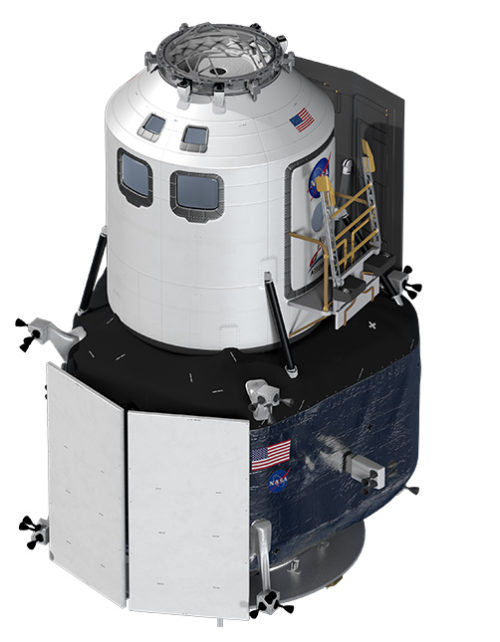
Previous details released by Blue Origin indicate a capacity to deliver around 9,900 pounds (4,500 kg) of payloads, supplies and (in this case) also crew to the lunar surface for the first time since December 1972. And in the words of John Couluris, National Team HLS Program Manager for Blue Origin, it represents the very first effort of the combined team to integrate the capabilities of all four partners into a fully functional mockup of what may become the vehicle to land the first woman and the 13th man on the Moon.
The BE-7-powered Descent Element, added Mr. Couluris, is “a game-changing Moon-landing vehicle”, capable of leveraging three years’ worth of Blue Origin expertise “to allow a sustained human presence for decades to come, by using lunar resources”. He also pointed out that by “importing the ability to have a sustaining presence on the Moon”, it would be possible “to expand humanity’s footprint” on our nearest celestial neighbor.
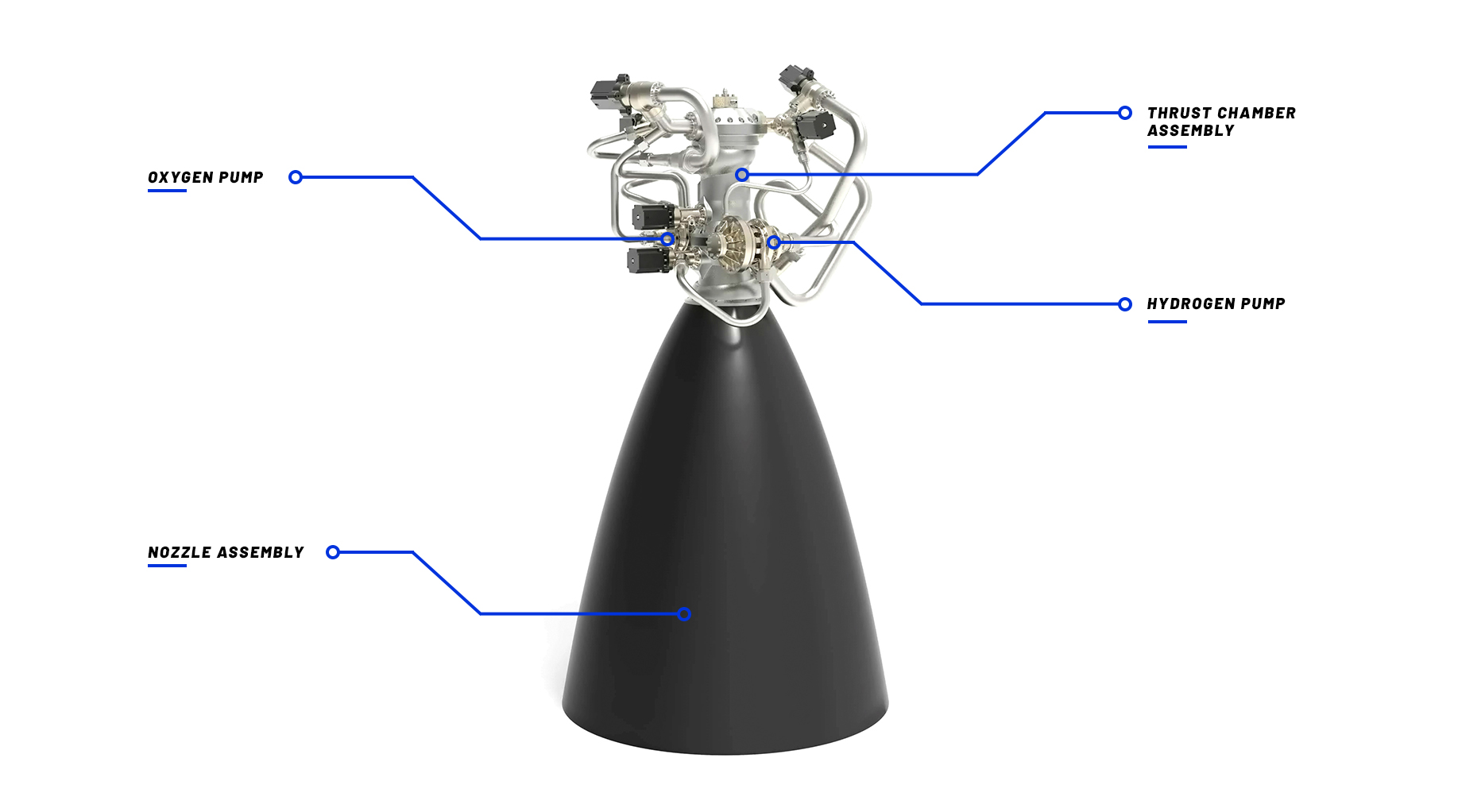
“Testing this engineering mockup for crew interaction is a step toward making this historic mission real,” said Brent Sherwood, vice president of advanced development programs at Blue Origin. “The learning we get from full-scale mockups can’t be done any other way. Benefiting from NASA’s expertise and feedback at this early stage allows us to develop a safe commercial system that meets the agency’s needs.”
“Each partner brings its own outstanding legacy to the National Team,” said long-time NASA veteran Kirk Shireman, who retired as International Space Station (ISS) Program Manager in June to join Lockheed Martin Space as the company’s vice president of lunar campaigns. “Augmenting state-of-the-art tools with physically being able to see, interact and evaluate a full-up lander in person is critical. It will inform our design and requirements earlier in the program, allowing us to accelerate our development and meet the 2024 lunar landing goal.”
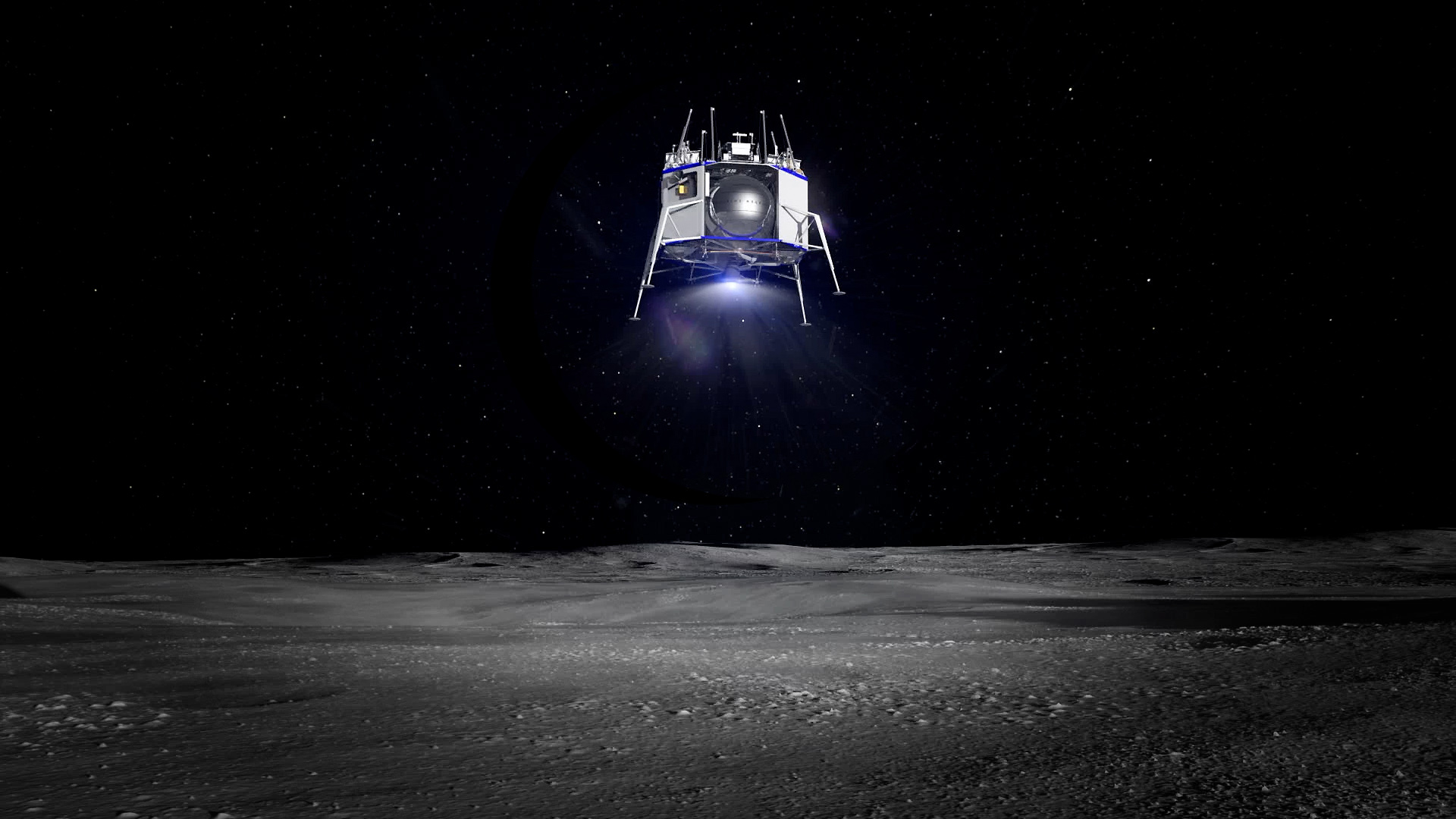
Several NASA efforts in recent decades to return astronauts to the Moon have met with frustration, due to excessive cost, unrealistic schedules and a lack of requisite political support. Under President George H.W. Bush’s 1989-1993 administration, the Space Exploration Initiative (SEI) sought to establish a permanent human presence on the lunar surface and a longer-term objective of a crewed voyage to Mars. However, its immense cost earned the ire of lawmakers, one of whom called it “one giant leap for starry-eyed political rhetoric and not even a small step for fiscal responsibility”.
The SEI breathed its last with the Clinton administration’s focus on a faster, better, cheaper way of doing business, but in 2004 during President George W. Bush’s tenure the Vision for Space Exploration (VSE) was born. It too envisaged a permanent return to the Moon and yielded plans to develop a series of powerful rockets and the Orion spacecraft.
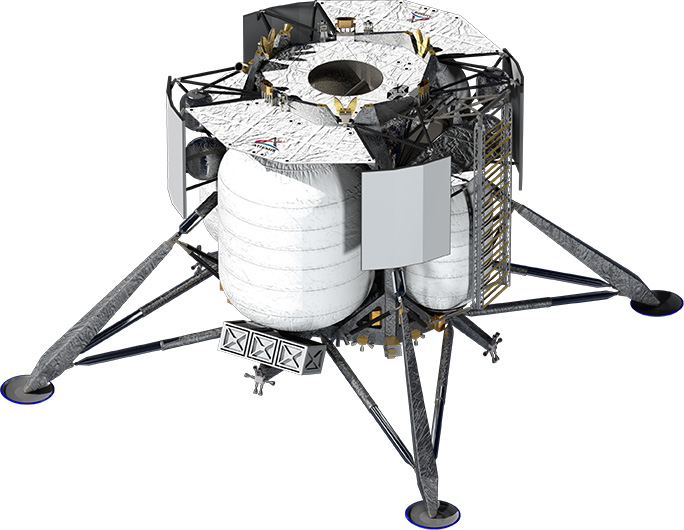
President Barack Obama’s administration kept much of the Orion architecture and kickstarted the development of the Space Launch System (SLS) super-heavylift booster, but shifted NASA’s focus away from the Moon and onto other destinations, including an asteroid and eventually Mars. More recently, in December 2017, President Donald Trump signed Space Policy Directive-1, authorizing NASA to proceed with efforts to again land U.S. astronauts on the Moon, originally by 2028 and last year being advanced to 2024.
As part of this gargantuan campaign, in December 2018 NASA unveiled plans to work with U.S. companies “to design and develop new reusable systems for astronauts to land on the lunar surface”. NASA Administrator Jim Bridenstine stressed that such plans would require the fostering of relationships with not only commercial entities and U.S. industry, but also international partners, in order to return to the Moon in a sustainable fashion.
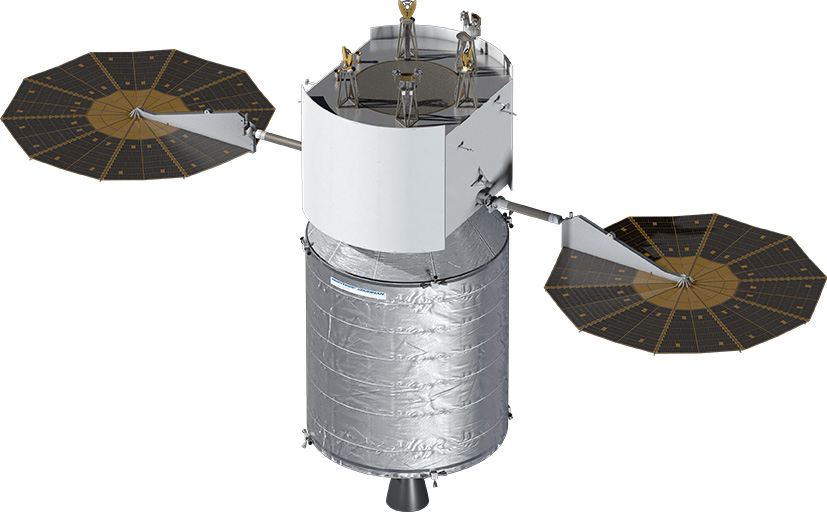
Having issued a formal request for proposals for HLS systems, NASA announced last May the selection of 11 companies—Aerojet Rocketdyne, Blue Origin, Boeing, Dynetics, Lockheed Martin, Masten Space Systems, Northrop Grumman Innovation Systems (NGIS), OrbitBeyond, Sierra Nevada Corp., SpaceX and Space Systems/Loral (SS/L)—to conduct studies and produce prototype human landers for the newly-named Artemis lunar exploration program, with a plan to land the first crew at the Moon’s south pole by 2024 and establish sustainable missions to our nearest celestial neighbor by 2028.
The contracts were awarded through the NextSTEP-2 Appendix H and each company was given six months and a total award of $45.5 million to develop prototypes. As NextSTEP is a public/private partnership program, the companies were required to contribute at least 20 percent of the total project cost, in order to reduce taxpayer costs and encourage early private investment in the lunar economy.
Last September, NASA opened a formal call to industry for proposals for a new HLS system. “The first company to complete its lander will carry astronauts to the surface in 2024,” the agency noted, “and the second company will land in 2025.” This exceptionally short timeframe was made possible in part through the removal of “potential barriers to speed”, including less formalized means of assessing critical contractor data and minimal administrative overheads.
Finally, in April 2020 NASA selected SpaceX, Dynetics and the Blue Origin National Team as winners of the combined $967 million, ten-month contract. It was noted at the time that the first three months would be spent understanding the three discrete designs. “NASA will later select firms for development and maturation of sustainable lander systems, followed by sustainable demonstration missions,” the agency noted in its news release. “NASA intends to procure transportation to the lunar surface as commercial space transportation services after these demonstrations are complete.”
Quelle: AS

